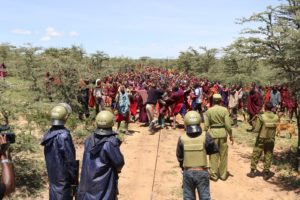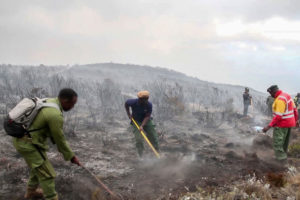by James L.Laizer
Tanzania Becomes Home to New Seed Bank, Aiming to Boost Food Security in Africa
The Alliance for a Green Revolution in Africa (AGRA) and the Agricultural Research Institute (ARI) have partnered to establish a new seed bank in Tanzania, the Africa Seeds and Biotechnology Centre. Positioned in Tanzania strategically due to its climate, the centre aims to distribute high-quality seeds to farmers across Africa. As part of AGRA’s broader initiative, the centre is expected to significantly contribute to improving food security on the continent, conducting research on seed varieties and technologies to boost agricultural productivity. This milestone aligns with Tanzania’s efforts to develop its agricultural sector, create jobs, and stimulate economic growth, contributing to the United Nations Sustainable Development Goals.
Tanzania shifts sights for tourism gold with five million visitors sought by 2025
The Citizen noted Tanzania aims to hit the 5 million tourists mark by 2025, boosting the sector’s already significant contribution to the economy (25% of foreign earnings, 17.5% of GDP). This push for “Responsible Tourism for Inclusive Growth” was showcased at the Swahili International Tourism Expo last year, featuring cultural performances from the new target nations. With global eyes on Tanzania’s tourism scene, President Hassan’s government aims to solidify the country’s place on the map, attracting diverse travellers and driving sustainable growth.
Xinhua reported that Tanzania seeks to diversify its tourist base by targeting China, Russia, and India as new strategic markets. This move, announced at the Expo, aims to tap into the growing middle classes in these countries. Tourism Minister Kairuki emphasized the tourism industry’s critical role in Tanzania’s economy. The expo showcased both Tanzania’s natural beauty and its commitment to sustainable practices.
According to the BBC, efforts to attract UK tourists include strategies implemented by the Tanzanian High Commission, such as establishing a special tourism desk, conducting roadshows, and promoting lesser-known circuits. The goal is to welcome 200,000 UK visitors by 2027, aligning with Tanzania’s broader plan to achieve 5 million annual tourists by 2025, aiming to generate $6 billion in tourism revenue.
Zanzibar Bets on Luxury Tourism with East Africa’s First Seven-Star Hotel
Zanzibar ventures into luxury tourism with East Africa’s first seven-star hotel on Pemba Island, a $1.2 billion joint venture with UAE investors. The opulent new hotel project aims to elevate Zanzibar’s tourism offerings but faces concerns about environmental impact and potential community displacement. While promising economic growth and job creation, responsible implementation and community engagement are deemed crucial for a sustainable outcome.
EU Parliament rebukes Tanzania over forced Maasai evictions.
According to Survival International, the European Parliament, citing escalating tensions and alleged violence, condemned the Tanzanian government’s displacement of the Maasai from their ancestral Serengeti lands, in December 2023. Demanding a halt to evictions and dialogue for a rights-respecting solution, the EU resolution adds to international pressure on Tanzania to protect the Maasai people and their cultural heritage.
Wildlife policy, anti-poaching plan launched to boost tourism
Tanzania launched a comprehensive plan to combat poaching and boost tourism late last year. The Wildlife Policy Implementation Strategy and Tanzania Elephant Implementation Plan 2023-2033 involves collaboration with the UN Development Programme (UNDP) and the Global Environment Facility (GEF), focusing on strengthening protection, engaging communities, and investing in anti-poaching efforts. Successes include a recovering African elephant population (from 43,330 to 60,000 since 2014) and rising rhino numbers.
Eastern Arc: An $8 billion emerald, but who guards it?
According to the Mongabay magazine, the importance of the Eastern Arc Mountains is underscored by a study involving over 70 scientists, emphasizing their $8.2 billion value through clean water, carbon capture, and tourism. Protecting this ecosystem, while providing fair compensation to locals, requires international collaboration and sustainable practices. Tanzania’s commitment to a greener future is evident as it explores carbon investments to transition to a lowcarbon economy. Challenges include capacity gaps and the need for supportive policies, but promising opportunities in renewable energy and sustainable land use exist. Concerns remain over the long-term security of the hotspot.
Carbon Credits in Africa: Green Promise or Neocolonial Echo?
According to the Citizen, in pursuit of a sustainable future, Tanzania is initiating carbon investments for a low-carbon future, establishing a national carbon market and strategy and a new partnership with the UAE. Challenges include capacity gaps and the need for supportive policies, but promising opportunities exist in clean energy and sustainable agriculture. As Tanzania navigates its carbon investment landscape, building capacity, ensuring alignment with sustainable development goals, and active stakeholder involvement are essential for long-term success.
Despite the potential benefits, concerns arise about Africa’s carbon credit market perpetuating ‘carbon colonialism.’ Tanzanian news platform Chanzo questions whether promised benefits will materialize for local communities and urges transparency, accountability, and community involvement. The challenge lies in ensuring equitable distribution of benefits and empowering local voices in climate action efforts.
Zanzibar Seeks Greener Horizons: Eco-Tourism Summit Charts Island’s Sustainable Future
According to the Citizen, the upcoming Zanzibar Sustainable Tourism Summit, being held on February 19-20, 2024, will gather tourism professionals, conservation experts, and government officials to chart a sustainable course for the island’s tourism industry. This event aims to chart a sustainable course by fostering collaboration, identifying responsible practices, and showcasing local eco-friendly solutions. Aligned with Zanzibar’s commitment to sustainable development, the summit seeks to address environmental challenges while promoting community engagement, resource protection, and cultural preservation.




